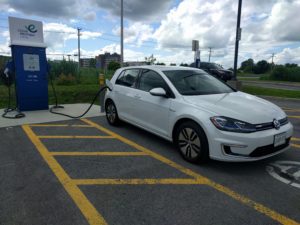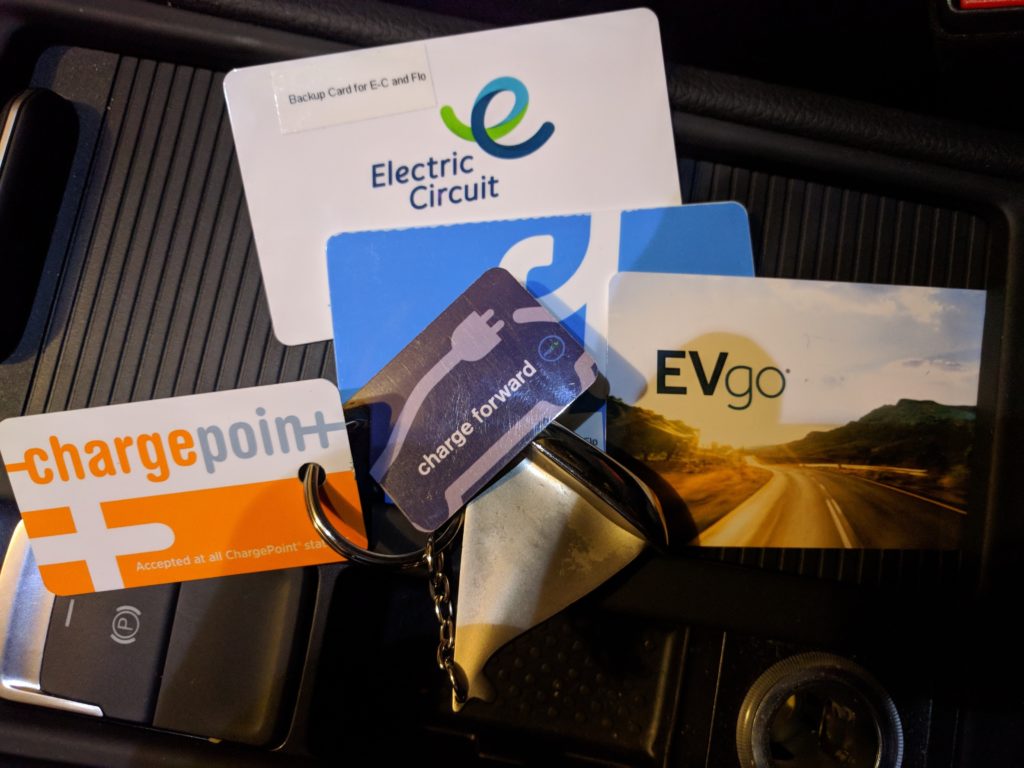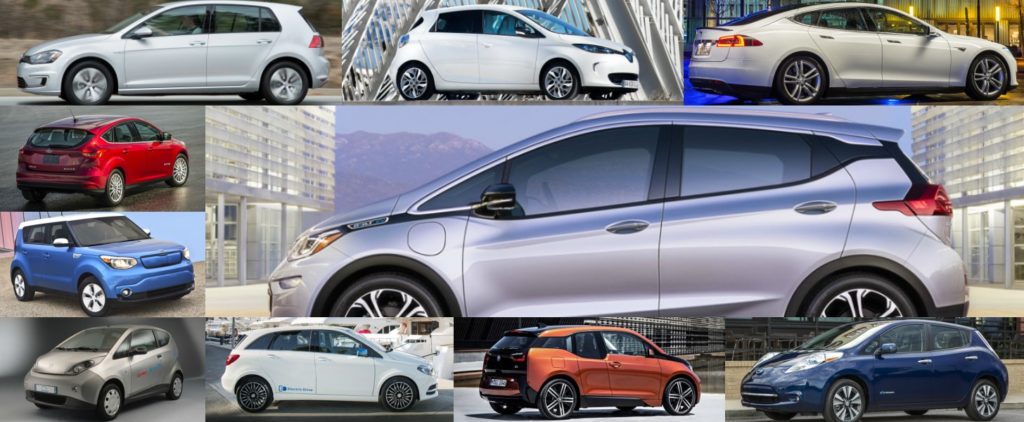
When you buy your EV you may find that your dealer does not know much about charging and how to make life easy with your EV, here is what we have discovered over the last 3-4 months and 11,000km of ownership. This page does not cover Tesla’s cars and charging because Tesla has this packaged really well and Tesla has their own resources to help.
Your EV and plug-in hybrid electric vehicle (PHEV) will have a plug known as a J1772 EV Plug.
 This universal plug is used for level 1 and 2 charging, all public Level 2 stations support this standard.
This universal plug is used for level 1 and 2 charging, all public Level 2 stations support this standard.You may also have an L3/DC fast charging with either a CCS connector, where the EV Plug has 2 extra pins for DC fast charging
 or a CHAdeMO plug.
or a CHAdeMO plug. The vast majority of Level 3 chargers support both CHAdeMO and CCS, but there are sites with either one or the other.
The vast majority of Level 3 chargers support both CHAdeMO and CCS, but there are sites with either one or the other.Home Charging

Level 1 charging uses a normal 110v plug and charges the car at 10-12 amps. This will add about 7km/hour to the cars range, slow but usable. Lots of EV owners only ever charge this way and for many it works well. There are some disadvantages, it takes a long time to fully charge the EV, for an e-Golf this could be up to 30 hours. Level 1 charging is less efficient as the EV’s charging system losses are a bigger percentage of the load. Level 1 makes it harder to take advantage of Time-Of-Day rates from your electricity provider as the time to charge might be longer than the cheap rate times. If you have a Plug-in Hybrid EV, Level 1 could be all you need.

Level 2 charging is more convenient as most EVs will charge at 40km/h so the charging time is much shorter – 3 to 5 hours. The cost of charging at level 2 is cheaper as the loss in the EV’s charging system is less as the charger runs for less time. Level 2 is much easier to use with Time-Of-Day rates.
The disadvantage of Level 2 charging is the start up costs. You need to run a 40 amp circuit to your garage or parking spot, you need to buy a charger. Installed this can run $1500-2000. Some jurisdictions provide subsidies for EV chargers.
We have a ChargePoint Home charger that we are very happy with. There are quite a few manufactures with a wide range of prices. You need to decide between a basic charger or a “smart charger” that connects to the internet for control and energy monitoring. If you are going the smart route, take a good look at the app and website for controlling the charger before buying.
There are other options for home charging such as kits and lower power units that can reduce the costs, we will cover these in a future post.
Public Charging
A couple of days after we picked up our car we headed out on a road trip to Maryland. We had some book smarts from researching on the Internet, but we really did not know what we were doing. That said, by the time we got back we were pros and we had a list of things we could have done to make life easier.
Finding Chargers:
Plugshare is the best app for finding chargers. Most of the information is crowd sourced and they have a check in and scoring system that highlights chargers with poor reliability, if the score on a charger is less than 10, check the comments to see if there is a problem. Checking in on Plugshare when you are charging allows you to be contacted if someone is waiting for you to return and you can use ChargeBump to help too. Having a pad and pen to leave notes – requesting to be plugged in for example is also handy.

Types of Public Chargers:

Public Level 2 chargers, most are 6-7kW (40km/h). They are often installed in pairs as the picture on the right shows. Costs for charging range from free to $1-2 per hour or fixed session prices around $4.
Public Level 3 chargers (CCS and/or CHAdeMO) can range from 20-50kW, providing 100-250km/h charging.  Costs vary from free to $10-20 per hour, some networks also charge a connection fee of $4-6. Fast charging can be quite expensive, particularly if the charging rate is restricted, perhaps ending up costing more than buying gas, but it is quite a small portion of the charging most people do that it does not impact the overall costs too much.
Costs vary from free to $10-20 per hour, some networks also charge a connection fee of $4-6. Fast charging can be quite expensive, particularly if the charging rate is restricted, perhaps ending up costing more than buying gas, but it is quite a small portion of the charging most people do that it does not impact the overall costs too much.
Paying for Charging:
One of the big issues with the EV world is the large number of separate charging networks that all seem to require their own accounts, apps and cards.
We discovered that using a card to start a charger is far easier than using your phone so we now have cards for all the networks we will normally use on trips.

If you live in Ontario or Quebec and you plan to travel, we recommend getting accounts with FLO or Electric Circuit, myEVRoute, ChargePoint and Greenlots. In other areas, take a look at the chargers in Plugshare to see if which accounts you might need.
With FLO or Electric Circuit you only need one or the other, they are both brands of the same company, Addenergie. FLO and EC provide the vast majority of charging stations in Quebec. They are growing their Ontario network under both brands. FLO and EC accounts also work in New Brunswick on the eCharge Network, There are a few chargers branded Reo Tinto or VER these are all on the same AddEnergie network and work with the same cards.
An account with myEVRoute, KSI’s charging network is required for travel in Ontario, they are installing over 90 Level 3 stations in Ontario, all west of Ottawa.
A ChargePoint account is handy for a number of free stations at VW dealers (CCS only) and free stations at various other locations.
Greenlots have some stations in Canada including a handy free one at Veridian Corporation in Ajax, I have their app, I have not bothered to get a card.
For our trip to the US we used EVGo at some stations and at the time we had to phone in and use a credit card which added to the cost. We now have an account and card and this should simplify matters with them. ChargePoint and Greenlots have lots of chargers in the Eastern US.
Sema Connect Level 2 chargers are very common but you can use Plugshare to activate and pay, avoiding yet another set of accounts.
Road Tripping
Enjoying heading out on the open road in an EV is all a matter of attitude. A bit of planning and a relaxed schedule can make for a great trip. It is much like travelling in the early days of the car, you go where the chargers take you and the journey is richer for it.

Views: 264

